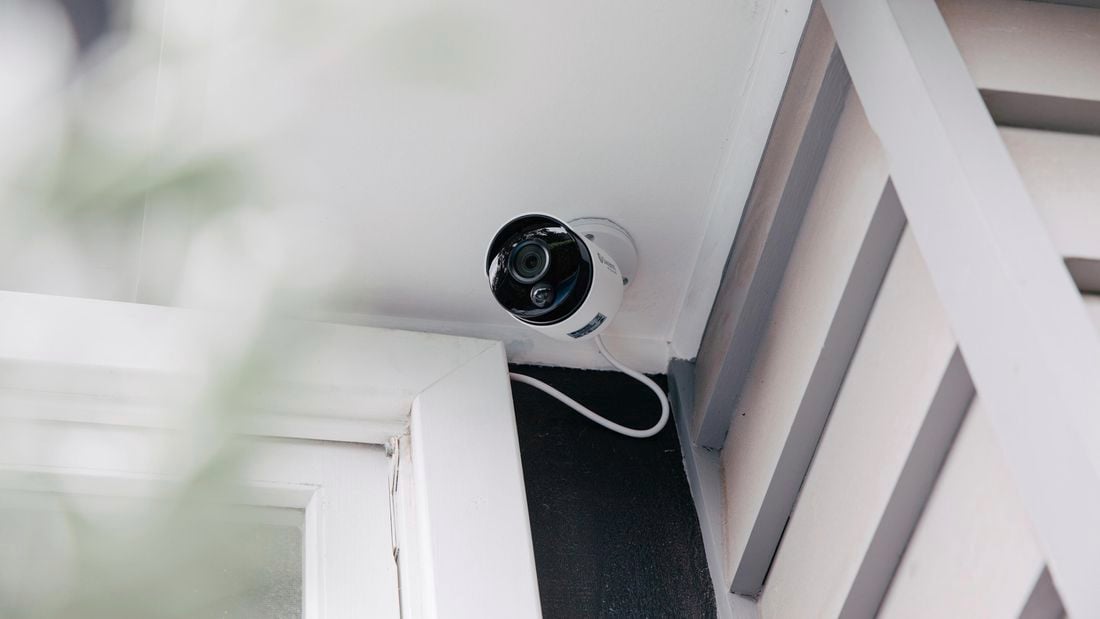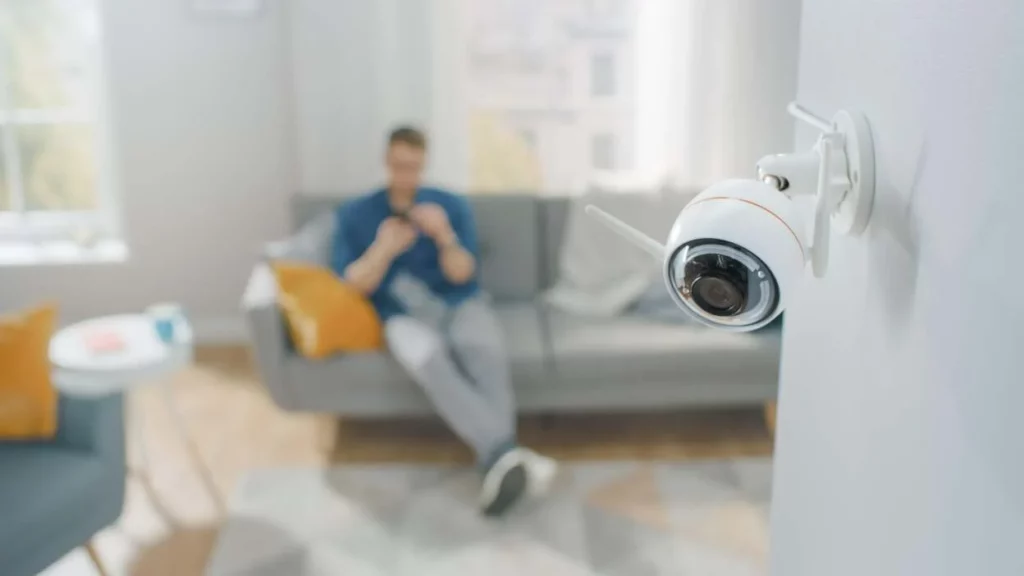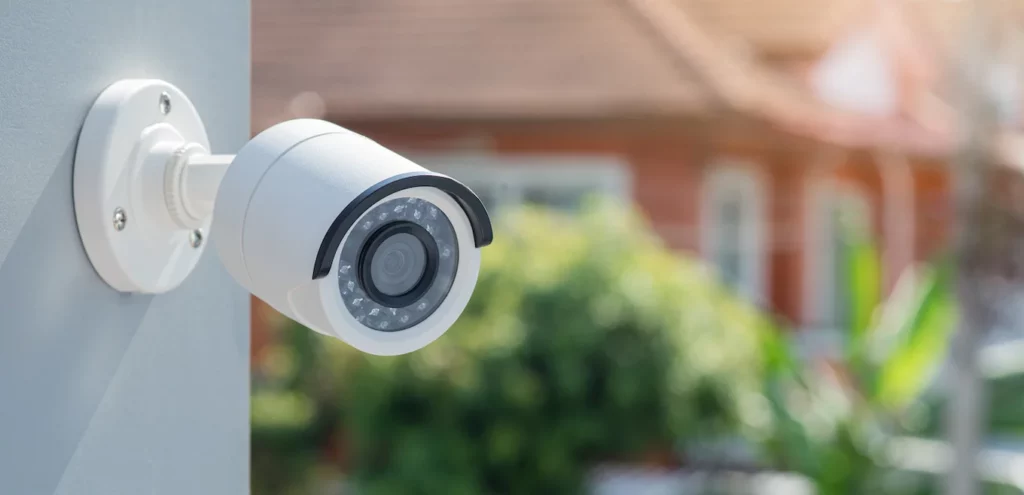How to Choose the Best Home Security Cameras Australia Has to Offer

Home security remains a top priority for Australian households, with security cameras playing a vital role in protecting properties and loved ones. The right security camera system acts as both a deterrent to potential intruders and a reliable monitoring solution for homeowners.
The Australian market offers diverse home security camera options:
- Smart WiFi Cameras – Perfect for DIY installation and remote monitoring
- Professional CCTV Systems – Ideal for comprehensive property coverage
- Wire-Free Cameras – Suitable for renters and flexible positioning
- Solar-Powered Options – Built for sustainable, continuous operation
Selecting the most suitable security cameras requires careful consideration of specific property needs, technical requirements, and budget constraints. This guide examines the essential factors to evaluate when choosing best home security cameras Australia, from basic features to advanced capabilities.
A well-chosen camera system provides:
- Real-time monitoring capabilities
- High-quality video evidence
- Peace of mind through 24/7 surveillance
- Integration with existing smart home systems
The following sections break down the key considerations to help Australian homeowners make informed decisions about their security camera investments.
Understanding Different Types of Home Security Cameras
Home security cameras fall into two main categories: indoor and outdoor models, each designed with specific features to suit their intended placement and purpose.
Indoor Security Cameras
Indoor security cameras are specifically designed for use inside your home. Here are some key features that set them apart:
- Compact, discreet designs that blend with home décor
- Lightweight construction for easy mounting on walls or shelves
- Built-in features like privacy shutters for personal spaces
- Standard operating temperature range (0-40°C)
- Basic protection against dust
Outdoor Security Cameras
Outdoor security cameras are built to withstand various weather conditions and provide reliable surveillance outside your home. Here are the main characteristics that define them:
- Robust, weather-resistant housing
- IP66 rating for protection against:
- Heavy rain and storms
- Extreme temperatures (-20°C to 50°C)
- Dust and debris
- UV radiation
- Integrated floodlights for enhanced security:
- Motion-activated illumination
- Deterrent effect on potential intruders
- Improved night vision capabilities
Additional Weather Protection Features
In addition to the standard features mentioned above, some outdoor security cameras come with extra weather protection elements:
- Protective housing with sealed connections
- Anti-corrosion materials
- Built-in heaters for cold climates
- Sunshields to prevent overheating
- Protected cable management systems
The distinction between indoor and outdoor cameras extends beyond physical durability. Outdoor models often include advanced features like wider viewing angles, longer-range night vision, and sophisticated motion detection algorithms to reduce false alerts from wildlife or moving branches.
Key Factors to Consider When Choosing Home Security Cameras
Strategic camera placement directly impacts security system effectiveness. The selection process requires careful evaluation of several critical features:
Camera Placement & Type Selection
- Entry Points: Pan-tilt-zoom cameras suit front doors and driveways
- Blind Spots: Wide-angle lenses cover larger areas like backyards
- Height Considerations: 2.5-3 metres optimal for outdoor cameras
- Indoor Focal Points: Fixed cameras work well for living spaces and hallways
Connectivity Options
Wi-Fi Cameras
- Easy installation
- Remote access via smartphone
- Potential interference from other devices
- Network dependency
Ethernet (PoE) Cameras
- Stable connection
- Power and data through single cable
- Professional installation required
- Limited by cable length
Proprietary Wireless Systems
- Enhanced security protocols
- Dedicated frequencies
- Higher cost
- Limited compatibility
Video Quality & Night Vision
Resolution Options
- 720p: Basic clarity
- 1080p: Standard HD quality
- 4K: Ultra-detailed footage
Night Vision Capabilities
- Infrared LEDs: Invisible illumination, monochrome footage
- White Light: Full-colour night vision, visible deterrent
- Range: 10-30 metres coverage area
Smart Features
Detection Capabilities
- Motion zones customisation
- Sound detection alerts
- Person identification
- Vehicle recognition
- Pet detection filters
Interactive Features
- Two-way audio communication
- Real-time alerts
- Live view access
- Digital zoom function
- Pre-recorded messages
These features combine to create a robust security solution tailored to specific property requirements. The right combination depends on individual security needs, property layout, and environmental conditions.
Storage Solutions for Home Security Cameras: Cloud vs Local Storage
When it comes to storing footage from your home security cameras, you have two main options: cloud storage and local storage. Each option has its own advantages depending on your specific security needs.
Understanding Cloud Storage Options
Cloud storage is a popular choice for many homeowners due to its convenience and flexibility. Here are some key features of cloud storage for security cameras:
- Free plans typically include 7-14 days of rolling storage: Most cloud storage providers offer free plans that allow you to store your video recordings for a limited period of time. This means that once the storage limit is reached, the oldest footage will be automatically deleted to make space for new recordings.
- Premium subscriptions extend storage to 30-60 days: If you require longer retention periods, you can opt for premium subscriptions that offer extended storage options. These plans usually come with a monthly or annual fee.
- Continuous video recording (CVR) available with select providers: Some cloud storage providers offer the option of continuous video recording, which means that your cameras will record 24/7 instead of only when motion is detected. This feature can be useful if you want to capture every moment without any gaps in footage.
- Automatic footage backup prevents data loss: One of the biggest advantages of cloud storage is that it provides an automatic backup solution for your video recordings. In case of theft or damage to your cameras, you can still access your footage from the cloud.
- Access recordings from any device, anywhere: With cloud storage, you can easily access your recorded videos from any device with an internet connection. Whether you’re at home or on vacation, you’ll always have access to your security footage.
Exploring Local Storage Features
While cloud storage offers convenience, some homeowners prefer local storage solutions for various reasons. Here are some key features of local storage for security cameras:
- MicroSD cards support 32GB to 256GB capacity: Many security cameras come with built-in slots for microSD cards. These cards can store anywhere between 32GB to 256GB of video footage depending on the model.
- External hard drives enable extensive footage archives: If you need more storage space than what microSD cards can provide, you can connect external hard drives to your cameras. This allows you to create extensive archives of your video recordings.
- No recurring subscription costs: Unlike cloud storage which often requires monthly or annual subscriptions, local storage solutions do not have any recurring costs associated with them. Once you’ve purchased the necessary hardware (microSD cards or external hard drives), there are no additional fees.
- Direct access without internet connection: With local storage, you don’t need an internet connection to access your recorded videos. This can be beneficial in situations where internet connectivity is unreliable or unavailable.
- Complete privacy control over recorded data: Local storage gives you full control over your recorded data. You don’t have to rely on third-party providers to store and manage your videos, which can enhance privacy and security.
Determining Your Storage Capacity Requirements
When deciding between cloud and local storage solutions, it’s important to consider how much space you’ll need for storing your video recordings. Here are some factors that can influence your storage capacity requirements:
- 1080p footage ≈ 60GB per week (continuous recording): If you’re using cameras that record in 1080p resolution continuously, you can expect each camera to consume approximately 60GB of storage space per week.
- 4K resolution demands 4x more storage space: Cameras that record in 4K resolution will require four times more storage compared to their 1080p counterparts. Keep this in mind when calculating your overall storage needs.
- Motion-triggered recording reduces storage needs: If you’re using motion-triggered recording instead of continuous recording, you’ll likely require less storage space as only specific events will be captured.
- Multiple cameras require proportionally more space: The number of cameras you have installed will also impact your overall storage requirements. Each additional camera will contribute its own video recordings which need to be accounted for.
Making the Right Choice for Your Surveillance Needs
Ultimately, the decision between cloud and local storage solutions depends on your specific surveillance requirements:
- Cloud Storage:
- Suitable for users needing remote access and automatic backups
- Ideal if you frequently travel or want the ability to view live feeds from anywhere
- Offers scalability options as you can easily upgrade your plan for more storage
- Local Storage:
- Appeals to those prioritising privacy and one-time costs
- Recommended if you’re concerned about storing sensitive data on third-party servers
- Provides direct access without relying on internet connectivity
It’s worth noting that many modern security cameras support both cloud and local storage options. This allows you to adopt a hybrid approach where certain critical footage is stored in the cloud while less important recordings are kept locally.
By understanding the strengths and weaknesses of each option, you can make an informed decision that best meets your home security needs.
Seamless Integration with Smart Home Systems
Modern home security cameras become powerful smart home devices when they integrate with popular ecosystems. This integration allows for automated routines and voice control, making it more convenient and secure.
Amazon Alexa Integration
With Amazon Alexa integration, you can:
- View live camera feeds on Echo Show devices
- Set up motion-triggered routines
- Control cameras through voice commands
- Arm/disarm systems using voice verification
Google Assistant Capabilities
The Google Assistant capabilities include:
- Casting camera feeds to Chromecast-enabled displays
- Creating custom voice commands
- Linking multiple cameras to Google Home hub
- Setting automated schedules and routines
Apple HomeKit Features
Apple HomeKit offers features such as:
- End-to-end encrypted video streaming
- Activity zones and facial recognition
- Integration with Apple TV and HomePod
- Secure remote access through Home app
Advanced Automation Options
For advanced automation, we provide options like:
- IFTTT compatibility for custom triggers
- Smart lighting coordination
- Automated door lock integration
- Temperature sensor connections
These smart integrations enable scenarios like:
- Lights activating when cameras detect motion
- Door locks engaging automatically at scheduled times
- Receiving mobile notifications for specific events
- Temperature-based recording adjustments
The ability to control security cameras through preferred voice assistants and smart home platforms creates a seamless, interconnected home security experience. Integration with existing smart home devices expands the functionality beyond basic surveillance to comprehensive home automation.
Power Source and Installation Considerations for Home Security Cameras
The choice between mains-powered, battery-operated, or solar-powered security cameras impacts both installation flexibility and long-term performance. Each option has its own advantages for different home security needs.
Mains-Powered Cameras
- Continuous, reliable power supply
- No need for battery replacement or recharging
- Ideal for high-traffic areas requiring constant recording
- Professional installation often required
- Limited placement options due to power outlet dependency
- Risk of failure during power outages without backup systems
Battery-Operated Cameras
- Flexible installation anywhere without wiring constraints
- Simple DIY setup process
- Portable and easily relocated
- Battery life ranging from 3-12 months depending on usage
- Weather-resistant models available for outdoor use
- Motion detection features to conserve battery life
Solar-Powered Cameras
Solar-powered options bridge the gap between mains-powered and battery-operated categories, offering continuous operation without mains power dependency. These hybrid solutions combine solar panels with rechargeable batteries, providing sustainable power for outdoor security cameras in well-lit locations. For instance, outdoor camera solar panel charging is a viable solution that enhances the functionality of outdoor cameras.
Installation Tips
- Consider camera height and angle for optimal coverage
- Ensure stable Wi-Fi connection at chosen location
- Select weatherproof housing for outdoor installations
- Plan cable routing for mains-powered units
- Check local regulations regarding camera placement
- Account for lighting conditions affecting image quality

Cost Analysis: Budgeting for Home Security Cameras in Australia
The Australian market offers security cameras at various price points to suit different budgets and requirements:
Entry-Level Options ($50-$150)
- Basic indoor cameras with 1080p resolution
- Limited features like motion detection
- Standard night vision capabilities
- Free cloud storage options
Mid-Range Models ($150-$400)
- Advanced features including pan-tilt-zoom
- Higher resolution (2K-4K)
- Enhanced night vision
- Weather-resistant outdoor models
- Extended cloud storage options
Premium Systems ($400+)
- Professional-grade equipment
- Advanced AI-powered features
- Multiple camera bundles
- Extended warranty coverage
Hidden Costs to Consider:
- Cloud storage subscriptions: $5-$15 monthly
- Professional installation: $100-$300
- Replacement batteries for wireless models
- Additional mounting hardware
- Extended warranty packages
A realistic budget should account for both upfront camera costs and ongoing expenses. While budget-friendly options provide basic security features, investing in higher-quality equipment often delivers superior performance and durability. Learn more about why Outdoor Home Security Cameras are a must-have this year.
One way to mitigate the long-term costs associated with cloud storage subscriptions is to consider home security cameras without subscription fees, which can significantly reduce your overall expenditure. Premium plans offering extended footage retention and advanced features represent a significant portion of long-term ownership costs.
Popular Home Security Camera Models Available in Australia
The Australian market offers diverse security camera options suited for different property types and security needs. Here’s a selection of popular models:
1. Ring Pan-Tilt Indoor Cam
- 1080p HD video quality
- 360-degree rotation capability
- Built-in privacy cover
- Two-way talk functionality
- Perfect for monitoring large indoor spaces
2. Blink Outdoor 4
- Weather-resistant design
- Up to 2-year battery life
- HD video with enhanced night vision
- Local storage options available
- Ideal for gardens and driveways
3. IMOU Rex 3D
- AI-powered human detection
- Auto-tracking feature
- Colour night vision
- Dual-band Wi-Fi connectivity
- Suitable for both indoor and outdoor use
4. Wyze Cam v3
- IP65 weather resistance
- Starlight sensor for low-light conditions
- 1080p HD with 130-degree viewing angle
- Free rolling 14-day cloud storage
- Budget-friendly option for apartments
5. WiZ Indoor Camera
- Smart motion detection
- Time-lapse video creation
- Integration with WiZ smart home ecosystem
- Magnetic base for easy mounting
- Excellent choice for rental properties
These cameras cater to specific needs – from the Ring Pan-Tilt’s comprehensive indoor coverage to the Blink Outdoor 4’s extended battery life. The IMOU Rex 3D stands out with its AI capabilities, while the Wyze Cam v3 offers exceptional value. The WiZ Indoor Camera excels in smart home integration, making it particularly suitable for tech-savvy users.
In addition to these popular models, there are also advanced options like the Xega 4G LTE Cellular Security Camera, which offers solar power, color night vision, and a PTZ (pan-tilt-zoom) feature. For those seeking high-definition footage with AI capabilities, the Amcrest 4K POE Camera is an excellent choice, providing superior image quality and advanced security features.
Additional Security System Components Complementing Cameras
A comprehensive home security setup extends beyond surveillance cameras. Strategic integration of complementary security components creates a robust defence system for Australian homes.
1. Alarm Systems with Smart Notifications
- Built-in motion sensors trigger immediate alerts
- High-decibel sirens act as deterrents
- Push notifications sent directly to mobile devices
- Integration with existing home automation systems
2. Advanced Access Control Solutions
- Biometric fingerprint scanners for keyless entry
- Digital keypads with customisable access codes
- Smart locks with temporary guest access features
- Real-time access logs and activity monitoring
3. Professional Back-to-Base Monitoring
- 24/7 surveillance by trained security professionals
- Direct connection to emergency response services
- Rapid dispatch of security personnel when needed
- Regular system health checks and maintenance
4. Intercom and Video Entry Systems
- HD video displays for visitor identification
- Two-way communication capabilities
- Remote access control via smartphone apps
- Multiple indoor monitor placement options
- Integration with existing doorbell systems
These components work together with security cameras to create multiple layers of protection. The combination of visual surveillance, access control, professional monitoring, and communication systems provides comprehensive security coverage for Australian homes.
Modern security systems allow centralised control through dedicated apps, enabling homeowners to manage all components from a single interface. This integrated approach ensures no security gaps exist while maintaining user-friendly operation for all household members.
Benefits of Installing a Comprehensive Home Security Camera System in Australia
A robust security camera system serves as a powerful crime deterrent in Australian homes. Research indicates that visible security cameras reduce burglary attempts by up to 50%. Potential intruders actively avoid properties with prominent camera installations, making these systems an effective preventive measure against break-ins and vandalism.
The presence of security cameras creates multiple layers of protection:
- Visual Deterrence – Prominently displayed cameras signal to criminals that the property is monitored
- Real-Time Alerts – Instant notifications of suspicious activity allow for swift action
- Evidence Collection – High-quality footage assists law enforcement in investigations
- Remote Monitoring – 24/7 surveillance capabilities through mobile apps
Modern security systems dramatically reduce emergency response times through:
- Direct links to monitoring centres
- Automated alert systems
- GPS location tracking
- Two-way communication capabilities
The integration of smart technology enables precise incident reporting with exact timestamps and locations. This critical information allows emergency services to respond strategically and effectively to security breaches.
Professional monitoring centres provide round-the-clock surveillance, ensuring rapid deployment of emergency services when needed. These monitoring facilities can verify threats in real-time, reducing false alarms and ensuring appropriate response levels for each situation.

Conclusion
Choosing the right home security camera system requires careful consideration of your property’s specific needs and your lifestyle requirements. By evaluating these key factors, you can find an effective security solution:
- Property layout and vulnerable entry points
- Budget constraints including ongoing costs
- Required features and integration capabilities
- Storage preferences and capacity needs
- Installation requirements and expertise
The Australian market offers a wide range of security camera options suitable for various situations. Making the right choice will not only enhance your home’s security but also provide you with peace of mind. By conducting thorough research, you can ensure that the system you select will deliver optimal protection through:
- Real-time monitoring capabilities
- Smart home compatibility
- Reliable storage solutions
- Professional support services
Taking the time to assess these factors will result in a security camera system that effectively safeguards your property. Investing in the right home security technology will create a safer living environment for Australian households.
